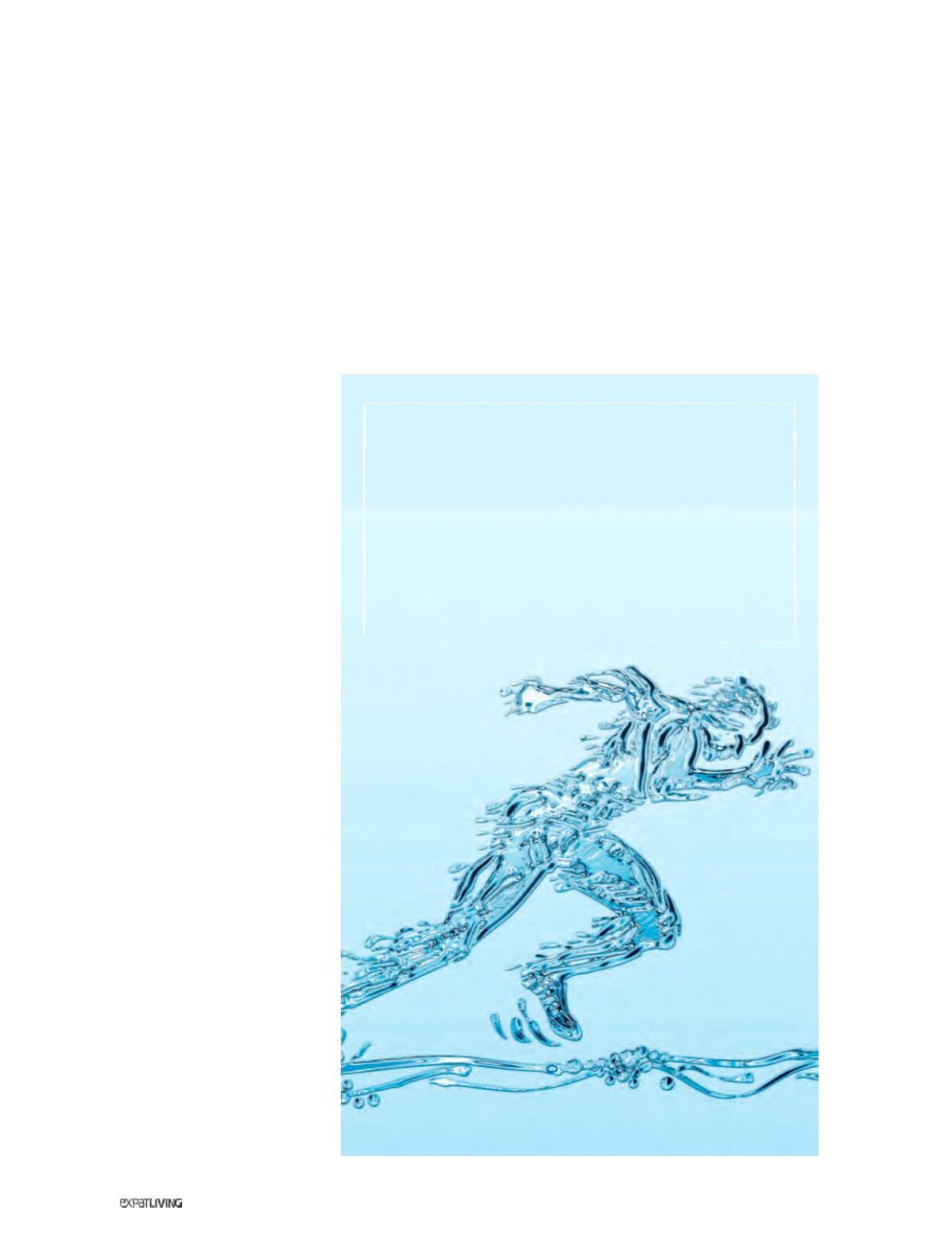

306
June14
time, wrote: “In the marathon… every
effort should also be made to do without
liquid.” And American MatthewMaloney,
who set a marathon record of 2:36:26 in
New York in 1908 said: “As to what I use
when in a marathon race, I only chew
gum. I take no drink at all.”
Now, it would be unthinkable to
suggest that runners shouldn’t drink
while training or racing. But how did we
go from pre-1950s practice to believing
we had to glug down as much as
humanly possible in order to avoid death
from dehydration or heatstroke?
The running boom
The big change happened in the 1960s,
when the running scene exploded,
millions of Americans took to the road,
and – surprise, surprise – big business
saw the vast opportunity in this huge
new market.
Gatorade, first marketed in the
60s, became the main sponsor of
international sports bodies like the
ACSM in the US. It’s also the first
platinum sponsor of the Australian
Institute of Sport (AIS), one of the
provisions being that AIS-sponsored
athletes may not promote the drinking
of water over the drinking of sports
drinks – and that Gatorade is the only
sports drink they may promote. This little
nugget only came out after legal action
in terms of the Freedom of Information
Act in Australia.
It wasn’t long before a slew of
sponsored scientific studies purported
to prove exactly what would send
Gatorade sales through the roof: that
any level of dehydration would impair
performance and even lead to death.
Tim Noakes spills the beans in
his book
Waterlogged: The Serious
Problem of Overhydration in Endurance
Sports
. Amongst other findings, his own
studies in the early 1980s showed that
those who became the most dehydrated
during performance (more than minus
three percent) also ran the fastest – and
that it did them no harm.
Noakes and others kept up the
pressure, but it took the ACSM 25 years
to acknowledge the error in its 1976
guidelines – that in order to optimise
performance and avoid catastrophic
How too much water can kill you
Exercise-associated hyponatraemia
, or EHA, happens
when the body retains too much water, Tim Noakes explains.
Most people simply excrete the excess fluid, but around 30
percent of those who over-drink will retain it. This happens
because their brains continue to secrete a hormone called
ADH (anti-diuretic hormone) when its production should have
been turned off. Excessive fluid accumulates in the blood,
sodium levels fall and the brain swells, with disastrous effects
that can include sudden death.
heat injuries, athletes should “drink as
much as is tolerable” – and instead to
encourage them to drink according to
the dictates of their thirst.
And so?
For an average runner like me (and
possibly you), the facts are really good
news. I don’t have to carry a bottle of
water around MacRitchie Reservoir,
because the sole drinking fountain en
route will do the trick. Before a race, I
won’t have to queue for the porta-loo
after drinking too much water. Even
better, I won’t be wasting time stopping
at every water-point along the way.
And finally, most elite runners still
drink according to their thirst, as elite
runners have always done. That’s good
enough for me.



















